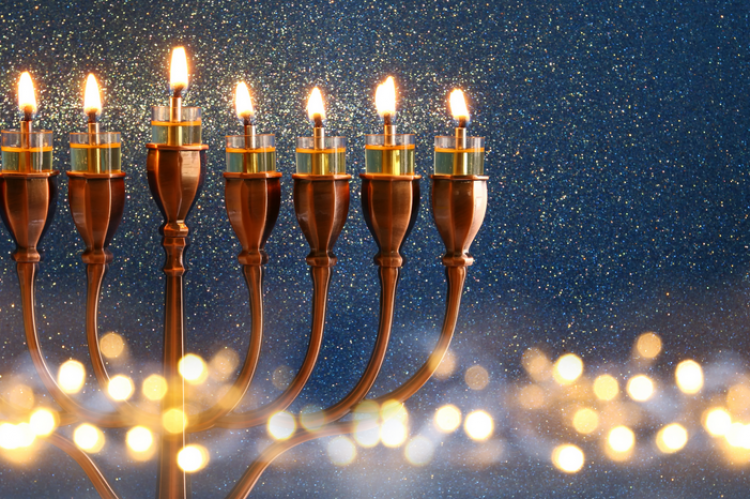I have tried, during my recent trip to Eretz Yisrael for our grandson’s wedding, to bring readers of this column along with me on some of my more memorable experiences. Needless to say, inspiration flows more readily when one is actually standing at the mekomos hakedoshim. Indeed, many have commented that in Eretz Yisrael, importuning Hashem feels like making a “local call.” Like so many others before me, I stood before Hashem with an almost endless list of bakashos for family members and friends, and for my kehillah. They included petitions for refuos, shidduchim, shalom bayis and parnasah. Unquestionably, the human condition is fraught with challenges. People have so much on their plates. Looking around, I could see that I was in the company of kindred spirits who, like me, were all pouring out their aching hearts to the Ribbono Shel Olam. I looked at the sacred Wall with all the pitka’os, heartfelt messages stuck in the crevices between the massive stones. I was reminded of a song about the Wailing Wall that wonders how the Kosel can bear the excruciating pain and broken hearts of klal Yisrael. The words of David Hamelech, “Va’ani tefillah,” accurately express this concept, as explained by a parable:A well-dressed individual once paid a visit to a wealthy philanthropist. He told him the sad story of how he had fallen on hard times and lost his fortune, explaining that this was why he was now asking him for a loan to get back on his feet.
Shortly after his departure, another person appeared at the door in tattered clothing and torn shoes, emaciated and unkempt. In contrast to the earlier visitor, there was no need for him to tell his story or describe his needs. The way he looked said it all; his appearance was the prayer. Similarly, the commentaries explain that David Hamelech didn’t preface his prayer by saying, “I place before You my supplication, Almighty G-d,” or something similar. Rather, the gist of his presentation was that his entire being was his “prayer.” There was no part of him that wasn’t saturated with the desire for Hashem’s intervention. “Just seeing me, Hashem, will convey my needs, for You alone can mitigate our painful condition.” I experienced a very emotional moment at Kever Rachel. My friend Ruthie, a resident of Yerushalayim who had accompanied me, pointed out a beautiful white satin paroches that covered a Torah ark opposite Rachel’s Tomb. She told me it had been made from the wedding dress that Nava Applebaum, Hy”d, was supposed to wear the day she and her father, Dr. David Applebaum, were brutally murdered by terrorists. Instead of escorting his daughter to the chuppah, one might easily envision Dr. Applebaum and Nava coming before the Throne of Glory.
The purity of soul that accompanies a kallah on her wedding day, symbolized by the white of her gown, undoubtedly marked her ascent to the supernal realms. But rather than being greeted by her chasan under the chuppah, she was greeted by the Master of the universe, and no doubt Mama Rachel was among the entourage. One can only imagine what a formidable force the two of them comprise in hastening the geulah and yeshuah for klal Yisrael. How poignant was the age-old reassurance gracing Mama Rachel’s final resting place: “Restrain your voice from weeping and your eyes from tears, for your work shall be rewarded…and they shall come back from the land of the enemy” (Yirmiyahu 31:16). Lest one get the impression that Eretz Yisrael is overcast with gloom, the picture must be balanced out by the myriad simchos and festive events that fill its streets, celebrations of life and faith. In addition to our grandson’s chasunah, our married grandchildren, extended family and “adopted children,” members of our community who have relocated to Israel, gave us great nachas. We were able to take pleasure not only in their beautiful lives, but in the fact that they have chosen to live in the more spiritually charged environment of the Holy Land. Baruch Hashem, our families and “adopted children” back in the States also give us many occasions to celebrate. While in Eretz Yisrael, I recounted with great pride the spiritual achievements of our community, which are a source of great pleasure not only to us, but more significantly, to our Heavenly Parent.
As I write this piece on the plane back to Milwaukee via New York, I must confide that I have mixed emotions. On the one hand, taking leave of my daughter, son-in-law and children at the airport was tearful. My three-year-old granddaughter Sarah, having finally grasped the concept that her mother, Bas Sheva, was my baby, asked her if she was sad that her mommy was leaving. Farewells are never easy. There’s an ache in my heart and a tear in my eye for what I leave behind. At the same time, I am looking forward to seeing the “local” members of my family and our beloved kehillah.
At this moment, my tefillah to the Ribbono Shel Olam reflects these mixed emotions. I implore Him to reunite all of us, wherever we might be on the globe, and take us back into His loving embrace, speedily in our days. May we be zocheh to Moshiach Tzidkeinu and the geulah sheleimah bimheirah beyameinu—amen! P.S. For those of you who remember the recent article in which I described my recalcitrant boot zipper, you will be relieved to know that both boots zipped up easily when I arrived in the US. Why the hassle I experienced upon landing in Israel? I have some ideas, and perhaps my readers have some suggestions for me to consider as well. I welcome your input.





